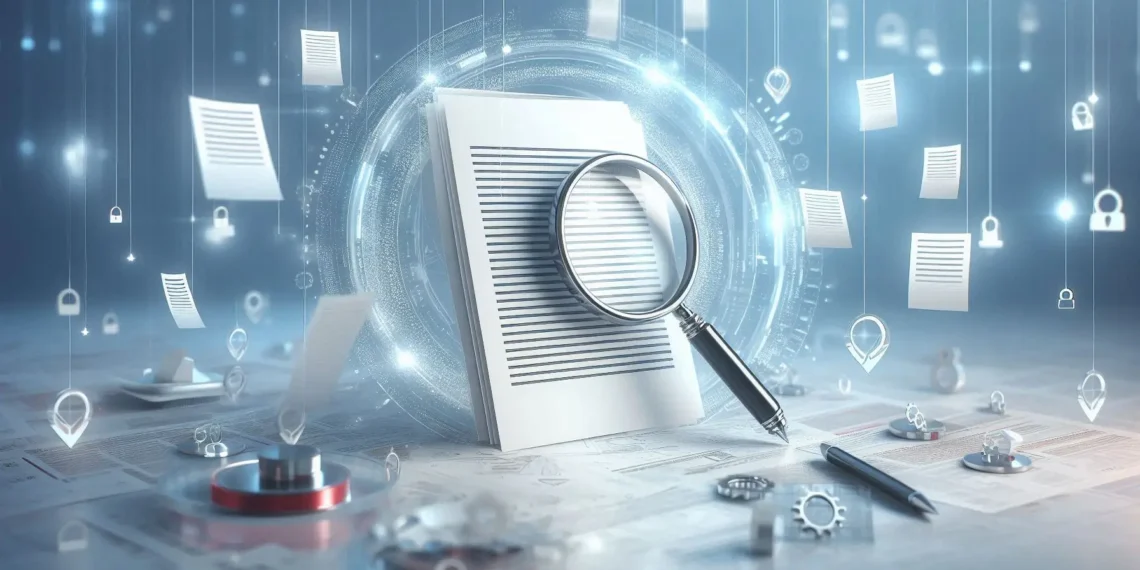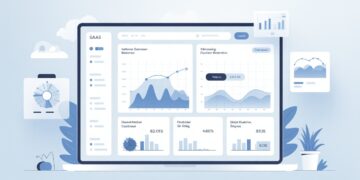Plagiarism detection in 2025 is very different from what it was even two years ago. With AI-writing tools widespread, content is rarely copied word-for-word anymore, it’s often paraphrased, AI-generated, or hybrid-written (part human, part machine). Because of this, plagiarism checkers have evolved from simple text-matching systems into multi-layered detection engines capable of analyzing writing patterns, semantic meaning, and author behavior.
This guide breaks down the top eight plagiarism detection tools in 2025, how they actually work, what they’re best for, and how their features differ so you can choose the right tool based on your profession, writing style, and risk level.
How Modern Plagiarism Checkers Work in 2025
Most people still think plagiarism checkers only compare text against the internet. In reality, modern tools combine several types of detection:
1. Text-Matching
The oldest method: comparing your writing to billions of published sources to find identical strings, sentences, and paragraphs.
2. Semantic Similarity Detection
Even if the words are changed, the meaning may be the same. Advanced tools analyze sentence structure, topic flow, and conceptual similarity to find paraphrased plagiarism.
3. Pattern-Based AI-Writing Detection
This is the biggest shift in 2025. Tools now analyze:
-
Rhythm of sentences
-
Predictability of word sequences
-
Repetition patterns typical of AI
-
Lack of personal nuance or stylistic variation
4. Document Structure Analysis
Some tools look at:
-
Formatting patterns
-
Citation style consistency
-
Abrupt tone changes
-
Section-level writing style shifts
to detect mixed human + AI writing.
5. Behavioral Indicators
This is emerging technology: some platforms evaluate typing behavior (time gaps, edits, revision patterns) to identify if a human actually wrote the content.
The Top 8 Plagiarism Checker Tools of 2025 — Expert Review
Each tool below has been rewritten with long-form, detailed insights, comparisons, use-case suggestions, and expert-level commentary.
1. Grammarly Premium — Best for Fast, Everyday Writing
Grammarly started as a grammar tool but is now a multi-layer writing assistant. Its plagiarism feature is designed for speed and convenience, not deep academic forensics.
What Makes Grammarly Strong in 2025
-
Extremely fast scanning of billions of pages
-
Simple interface built for students, professionals, and everyday writers
-
Integrated with Grammarly’s grammar, clarity, tone, and AI-writing feedback
-
Detects near-duplicate patterns, not just exact matches
-
Helps you clean up accidental plagiarism by flagging weak paraphrasing
Expert Insights
What makes Grammarly unique is how it combines writing assistance with plagiarism detection. When it flags a section, it also suggests:
-
how to rewrite it more originally
-
how to cite it correctly
-
how to improve the clarity of the reworded text
This is ideal for writers who are not intentionally plagiarizing but tend to write too closely to their sources.
Best For
-
Students writing essays
-
Business writers
-
Bloggers who need quick checks
-
Anyone needing an all-in-one writing tool
Not Ideal For
-
Deep academic plagiarism checks
-
Detecting sophisticated paraphrasing in research papers
-
Checking student submissions at scale
2. WhiteSmoke — Best Low-Cost Multitool for Beginners
WhiteSmoke has been around for years, known mostly as a grammar checker. Its plagiarism feature is basic but integrated into a larger writing suite.
What WhiteSmoke Offers
-
Simple text-based comparison
-
Email and business-writing templates
-
Browser-based editing
-
Basic highlight report showing matched sections
Compared to modern tools, WhiteSmoke is lightweight. It’s best for quick scans, not deep analysis.
Unique Insights
WhiteSmoke’s strength is its simplicity. If you’re a casual writer or English learner who wants:
-
basic grammar help
-
quick plagiarism checks
-
a cheaper alternative to Grammarly
then WhiteSmoke is a friendly entry-level tool.
Best For
-
ESL learners
-
Small business owners
-
Occasional writers
Not Ideal For
-
Academic professionals
-
Technical writers
-
AI-text detection
3. Scribbr — Best for Research Papers and Academic Work
Scribbr is one of the most trusted tools by university students and researchers because it emphasizes precision and contextual understanding.
Why Scribbr Stands Out in 2025
-
Highly detailed similarity reports
-
Full-sentence matching rather than partial hits
-
Multi-language support
-
Excellent citation-assistance tools
-
Strong detection of paraphrased academic content
Scribbr is particularly good at catching:
-
incorrect paraphrasing
-
recycled thesis statements
-
reused research explanations
-
“patchwriting” (mixing original text with copied phrases)
Expert Commentary
Many academic writers prefer Scribbr over general-purpose tools because it shows where your argument structure resembles existing papers. This is more sophisticated than simple text matching.
Best For
-
College essays
-
Master’s or PhD research papers
-
Literature reviews
-
Scientific writing
Not Ideal For
-
Casual writing
-
Everyday blog posts
-
Bulk content checking
4. Turnitin — Best for Universities and Large Institutions
Turnitin is still the gold standard in academia not because it’s the easiest, but because it has the deepest, most exclusive content database.
Why Turnitin Dominates Education
-
Access to academic submissions from thousands of universities
-
Very large research-paper and journal database
-
Consistent similarity scoring
-
Ability to detect subtle conceptual plagiarism
-
Increasing focus on AI-assistance detection
Unlike other tools, Turnitin sees material that is not public online prior student submissions. This makes it extremely effective against:
-
recycled essays
-
previously submitted class papers
-
purchased pre-written assignments
Expert Insights
Turnitin is designed for instructors, not students. Students rarely get full access because the system is built around academic integrity evaluation, not self-checking.
Best For
-
Teachers
-
Universities
-
Professors assigning essays and research
Not Ideal For
-
Individual writers
-
Anyone wanting a self-checking tool
5. Copyscape — Best for Websites and Online Publishers
Copyscape has long been a favorite for detecting online plagiarism especially for bloggers, marketers, and SEO writers.
What Copyscape Does Great
-
Checks published URLs for duplicates across the web
-
Strong at detecting stolen blog content
-
Excellent for tracking content theft
-
Alerts for new copies of your articles
-
Integrates with CMS systems through an API
What Makes It Unique
Copyscape is not designed for academic use it is built for web content protection. It’s ideal for:
-
checking if other websites stole your articles
-
ensuring your writers are submitting original blog posts
-
protecting high-value pages (landing pages, product descriptions)
Best For
-
SEO teams
-
Bloggers
-
Web publishers
-
Freelance agencies
Not Ideal For
-
Academic research
-
AI-detection
-
Offline documents
6. Unicheck — Best for Schools Using Digital Platforms
Unicheck is a modern plagiarism tool built for cloud environments. It integrates smoothly with educational platforms such as Google Classroom or Canvas.
Key Strengths
-
Real-time scanning
-
Clean, readable reports
-
Cloud-native platform
-
Solid detection of rewritten text
-
Strong support for multi-format submissions
Unique Insights
Unicheck focuses heavily on user experience:
-
Clean reports
-
Color-coded similarities
-
Easy teacher dashboards
It’s not as deep as Turnitin, but it’s faster and more user-friendly.
Best For
-
K–12 schools
-
Teachers managing digital assignments
-
Cloud-native institutions
Not Ideal For
-
Professional writers
-
Academic researchers
-
Large-scale enterprise content
7. QuillBot — Best Combined Paraphraser + Plagiarism Detector
QuillBot is known for its paraphrasing tool, but it also offers a surprisingly capable plagiarism checker.
What QuillBot Offers
-
Detects large blocks of copied or partially rewritten text
-
Shows originality score
-
Highlights problematic sections
-
Integrates with its paraphrasing tool for rewriting
-
Helps generate citations automatically
Unique Insights
QuillBot is excellent for students who struggle with rewriting information. Instead of simply flagging problems, it helps you:
-
rewrite
-
reorganize
-
clarify
your content so that it’s unique and readable.
This makes it more of a writing improvement system than a strict plagiarism tool.
Best For
-
Students
-
Non-native speakers
-
Research summary writing
Not Ideal For
-
Deep academic plagiarism detection
-
Writers needing AI-text identification
8. PlagScan — Best Budget-Friendly Professional Checker
PlagScan is a balanced, affordable tool that provides detailed reports without the complexity of institutional platforms.
Why PlagScan Works Well
-
Fast scanning
-
Simple interface
-
Good accuracy for academic and professional writing
-
Detailed similarity reports with side-by-side views
-
Allows bulk document checks
Expert Insights
PlagScan is especially useful for:
-
small colleges
-
private tutors
-
writing agencies
-
professional editors
It’s less technical than Turnitin but more robust than lightweight tools like WhiteSmoke.
Best For
-
Editors / proofreaders
-
Small academic institutions
-
Professional writers
Not Ideal For
-
Deep AI-writing detection
-
SEO content checking
People Also Ask — Updated for 2025
Can plagiarism checkers detect AI-generated text?
Many can detect AI-style patterns, but none are perfect. Tools now focus on writing structure, predictability, and tone to identify machine-generated writing.
What is the most accurate plagiarism checker?
For academia: Turnitin.
For professional-level checking: Scribbr or PlagScan.
For online content: Copyscape.
Each is accurate in different contexts.
Is paraphrasing considered plagiarism?
If the ideas or structure remain too close to the original source, yes. True paraphrasing requires rethinking, not just rewording.
Conclusion
By 2025, plagiarism detection has evolved far beyond simple text matching. With AI tools influencing how people write, modern plagiarism checkers now evaluate meaning, style, writing behavior, and conceptual flow.
Choosing the right tool depends on your work:
-
Turnitin → Academic institutions
-
Scribbr → Researchers and students
-
Grammarly → Everyday writing
-
Copyscape → Bloggers and SEO teams
-
PlagScan → Editors and professionals
-
Unicheck → Schools
-
QuillBot → Rewriting and paraphrasing support
-
WhiteSmoke → Budget general writing tool









